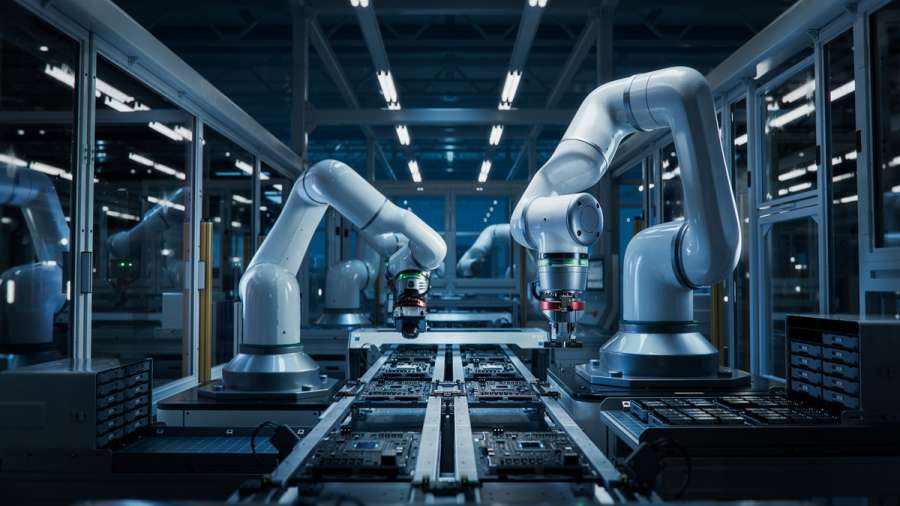In the intricate world of machinery, bearing failure in machines is an inevitability that machine operators, technicians, and industry QA professionals must grapple with. Recognizing the early symptoms of a failing bearing is crucial to preventing costly downtime. This article aims to unravel the factors contributing to bearing failure, its implications on machine health, and strategies for mitigating this common issue.

What are Bearings and Their Importance?
Bearings are pivotal components in machinery, enabling motion and reducing friction between moving parts. They carry substantial loads and facilitate rotational or linear movement. Their role is indispensable in machines ranging from household appliances to complex industrial gear.
Common Causes of Bearing Failure
Bearing failure often emerges from a blend of mechanical, operational, and environmental factors. Some of the predominant causes include:
Poor Lubrication
Lubrication is vital for reducing friction and wear in bearings. Insufficient or inappropriate lubrication can lead to increased heat generation, premature wear, and eventual failure.
Contamination
Contaminants such as dirt, dust, and moisture can infiltrate the bearing, leading to surface degradation and abnormal wear. This contamination can arise from improper sealing or handling during installation.
Misalignment
When bearings are misaligned, the load distribution is uneven, causing excess pressure on specific areas. This leads to an elevated risk of fatigue and failure.
Overloading
Exposing bearings to loads beyond their capacity accelerates wear and could lead to abrupt failure. Regular assessments and maintenance can help detect and correct overloading issues.
Early Signs of Bearing Damage
Recognizing early signs can avert disaster. Listen for unusual noises like grinding or squealing, look for overheating signs such as discoloration, and watch for increased vibration.
Consequences of Bearing Failure in Machines
A failed bearing can result in several adverse outcomes:
Increased Operational Costs
Repairing or replacing bearings and affiliated components can be costly. Moreover, unplanned downtime leads to productivity losses.
Machine Inefficiency
Compromised bearings hinder machine performance, impacting operational efficiency and product quality.
Potential Safety Hazards
In severe cases, bearing failure can lead to catastrophic machine breakdowns, posing safety risks to operators.
Preventive Maintenance Strategies
Preventive maintenance is key to prolonging bearing life. Here are essential strategies:
Regular Inspections
Establish a routine for frequent inspections to detect wear, alignment issues, and lubrication levels promptly.
Proper Installation
Ensure bearings are installed meticulously to avoid alignment issues and other errors that could precipitate failure.
For insights into cutting-edge technologies aiding in machine inspection, consider exploring non-contact stroboscopes.
Effective Lubrication Management
Use suitable lubrication and establish a schedule for consistent reapplication to ensure optimal bearing functionality.
Sealing and Shielding
Implement adequate seals and shields to protect against contamination, one of the key contributors to bearing failure.
Load Management
Ensure bearings operate within designated load capacities to prevent premature degradation.
How Technology Assists in Bearing Maintenance
Technological advances in monitoring and data analysis greatly aid in early detection of bearing issues. Techniques such as AI-powered quality control are proving invaluable.
Conclusion
While bearing failure in machines is a common hurdle in industrial settings, comprehensive understanding and diligent preventive strategies can significantly mitigate risks. Awareness and proactivity are the guiding forces in maintaining operational continuity and machinery longevity.
Further Reading
For additional insights on equipment failure causes, visit Fieldex Blog.

FAQs
Q1: How often should bearings be inspected?
A: It’s recommended to inspect bearings at least every three to six months, depending on operational conditions.
Q2: What is the most common cause of bearing failure?
A: Inadequate lubrication is the leading cause of bearing failure.
Q3: Can bearing failures be predicted?
A: With modern predictive maintenance tools, impending bearing failures can often be anticipated, reducing downtime and repair costs.
This article contains affiliate links. We may earn a commission at no extra cost to you.
